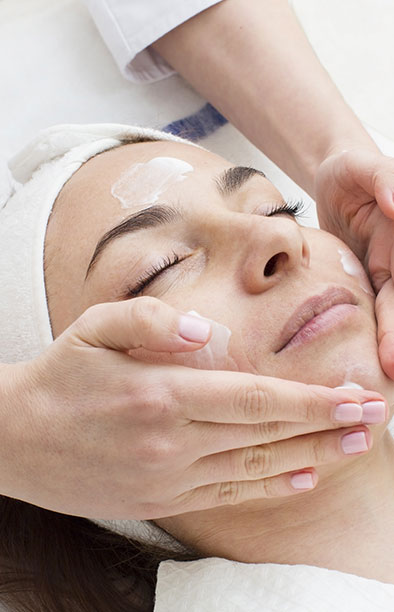Have environmental factors like the sun left your skin looking aged? Or perhaps you are living with an uneven skin tone that makes you feel self-conscious about your reflection? Patients who are unhappy with the appearance of their skin can turn to a chemical peel to improve the overall appearance of their complexion.
What is a Chemical Peel?
Chemical peels can help to improve the appearance of the skin by using a chemical solution. This solution works by removing the outermost, damaged layers of the skin to reveal healthy skin underneath. Dr. David Baird offers glycolic and salicylic acid peels to address an array of skin irregularities. Chemical peels can help improve:
- Acne scars
- Age spots
- Freckles
- Hyperpigmentation
- Sun-damaged skin
- Rough/scaly skin
- Fine lines and wrinkles
I’ve been a patient here for about 4 years, and I couldn’t be more pleased. The staff is really nice, and appointments are 90% on time, and the doctor is really great. He doesn’t over prescribe/offer unneeded treatments, and he is really just a nice guy. 10/10, 100% recommended.”
Who is a Good Candidate for Chemical Peels?
Most patients are good candidates for a chemical peel. However, you may want to avoid this treatment if you have a history of abnormal skin scarring or have used certain acne treatments within the last year. A consultation with Dr. Baird can help to best determine if this treatment is a good match for you.
ON OUR BLOG
4 Signs Your Face Might Be Ready For A Chemical Peel
Chemical Peels and Acne Scarring: What to Know
Treat Your Acne with a Chemical Peel
How to Prevent Skin Imperfections
Preventing skin imperfections, such as acne scars, age spots, freckles, hyperpigmentation, sun-damaged skin, rough or scaly skin, and fine lines and wrinkles, starts with consistent, proactive skincare. Daily use of a broad-spectrum sunscreen helps protect against UV damage that contributes to discoloration and premature aging. Meanwhile, a gentle cleansing and exfoliating routine can prevent clogged pores and promote a smooth, even skin texture. Incorporating antioxidant-rich serums, retinoids, and hydrating ingredients like hyaluronic acid can support skin renewal, reduce inflammation, and preserve your skin’s youthful appearance over time.
Chemical Peel Treatments
In general, there are three types of chemical peels: light, medium, and deep. The type of chemical peel used will depend on your individual skin type and the extent of correction needed. During a consultation we will help you decide the right chemical peel for your cosmetic goals.
Before Your Chemical Peel Treatment
Before undergoing a chemical peel treatment, it’s essential to schedule a consultation to determine the appropriate type and strength of peel for your specific skin concerns and goals. During this visit, your provider will review your medical history, assess your skin type, and offer personalized pre-treatment instructions to ensure optimal results. On the day of your peel, please arrive with a clean face, free of makeup, lotions, and sunscreen, to ensure the solution penetrates evenly. You may also be advised to discontinue using certain skincare products, such as retinoids or exfoliants, for several days prior to treatment to minimize sensitivity. Following these steps helps create the ideal conditions for a safe, effective peel.
During Your Chemical Peel Treatment
During treatment, your face will be cleaned to remove any makeup, oil, or buildup on the skin. After your skin is cleansed, chemical solution will be applied to your skin to remove the outer, damaged layers. The peel will then be washed away and neutralized.
Chemical Peel Recovery
Following a chemical peel, patients can experience redness for up to 24 hours. It is advised that patients avoid direct sunlight to the treatment area for several months for optimal results.
If you are interested in improving the appearance of your skin for a more youthful appearance, contact Farmington Dermatologists today at 248-476-4850 to schedule your consultation with Dr. Baird.


